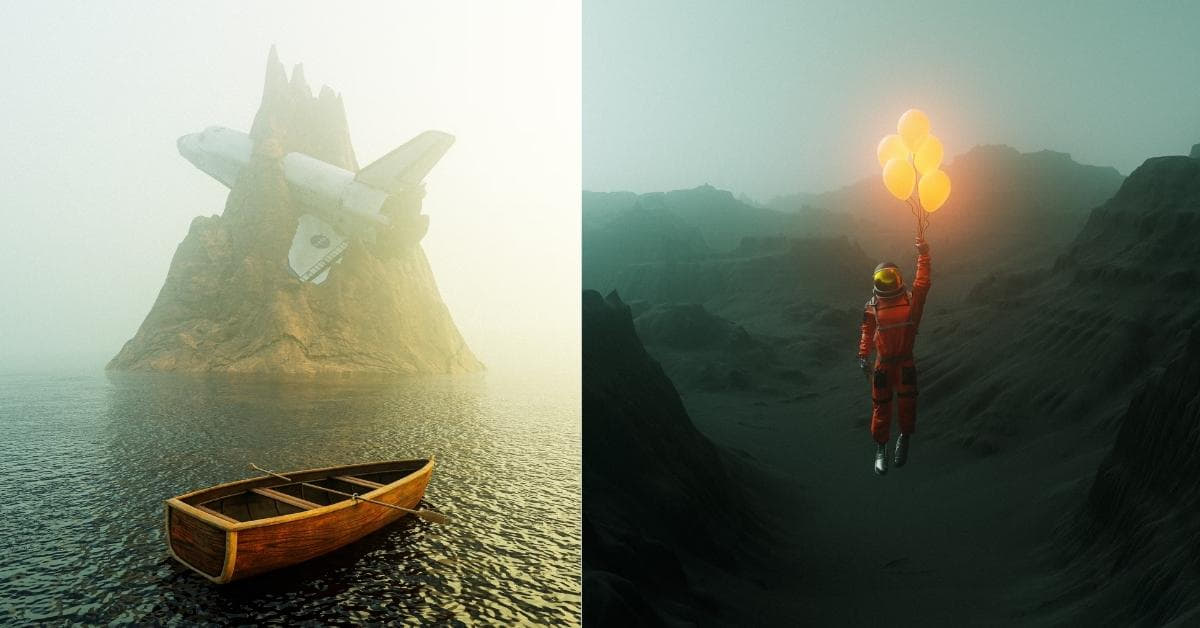In the digital age, photography has evolved far beyond merely capturing moments; it has become a canvas for creativity and self-expression. One of the most captivating forms of digital artistry is photomanipulation. This enchanting practice allows artists and designers to weave stories, dreams, and illusions through the alteration and blending of images. In this article, we’ll explore the fascinating world of photomanipulation, its techniques, and its significance in the realm of digital artistry.
What is Photomanipulation?
Photomanipulation, short for “photo manipulation,” is a versatile technique in digital art where photos are altered or combined to create an entirely new image. It involves enhancing, retouching, or even completely transforming photographs to achieve artistic or conceptual goals. The process often entails using graphic design software such as Adobe Photoshop, GIMP, or other specialized tools to merge and modify elements from various sources.
The Magic Behind Photomanipulation
- Combining Reality and Imagination: Photomanipulation bridges the gap between reality and imagination. It empowers artists to blend elements from different photographs, creating scenes and scenarios that might only exist in dreams.
- Emotional Impact: Photomanipulation can evoke powerful emotions in viewers. By carefully selecting and manipulating elements within an image, artists can communicate a wide range of feelings, from joy to melancholy.
- Storytelling: The best photomanipulations tell stories. They transport viewers to different worlds, eras, or realities, creating a narrative through the composition, color, and symbolism within the image.
Photomanipulation Techniques
- Cutting and Pasting: A fundamental technique involves cutting out elements from one image and pasting them onto another. This is often used to create surreal or whimsical scenes.
- Blending and Layering: Blending modes and layer masks in software like Photoshop enable smooth integration of multiple images. Artists can control transparency and blending effects to make objects look like they naturally belong together.
- Color Adjustments: Adjusting the color balance, saturation, and contrast helps unify elements from different sources and creates a cohesive final image.
- Texture Overlay: Adding textures, like grunge or vintage textures, to images can create a unique atmosphere and add depth to photomanipulations.
- Digital Painting: Artists can hand-paint details, shadows, or highlights to enhance realism and control the lighting in the final image.
Significance of Photomanipulation in Digital Art
Photomanipulation is a powerful form of digital artistry with several key contributions:
- Expression and Creativity: It offers artists a medium for boundless creativity, enabling them to create visually stunning, thought-provoking, and emotionally resonant artworks.
- Commercial Use: Photomanipulation is not limited to the realm of art; it’s a valuable skill in advertising, web design, and marketing, where enhancing images and creating compelling visuals is paramount.
- Storytelling Tool: It allows for the visual expression of complex narratives and concepts, making it a versatile tool for illustrators, authors, and filmmakers.
FAQs
Q1: Is photomanipulation the same as photo editing?
No, they are not the same. Photo editing typically involves enhancing or correcting photos, whereas photomanipulation goes beyond editing to create entirely new compositions by merging or altering multiple images.
Q2: What software is commonly used for photomanipulation?
Adobe Photoshop is one of the most popular choices. GIMP (GNU Image Manipulation Program) is a free alternative. Other software options include Adobe Lightroom and Corel PaintShop Pro.
Q3: Are there legal concerns with using copyrighted images in photomanipulation?
Yes, using copyrighted images without permission can raise legal issues. To avoid this, use your own images, obtain proper licenses, or use images under creative commons licenses.
Q4: Can I learn photomanipulation as a beginner with no prior experience?
Absolutely! There are plenty of tutorials and online resources for beginners. Start with simple projects and gradually build your skills.
Q5: Can photomanipulation be considered a form of art?
Yes, photomanipulation is unquestionably a form of art. It allows artists to express themselves, tell stories, and evoke emotions, making it a powerful medium for self-expression.
Conclusion
Photomanipulation is a captivating art form that melds reality and imagination to create visually stunning and emotionally resonant works of art. By combining various techniques and tools, artists and designers can breathe life into their ideas and convey narratives through the magic of digital image transformation. Whether you’re an aspiring digital artist or simply an admirer of this captivating art form, photomanipulation opens a door to a world where the possibilities are limited only by your imagination. So, grab your software, and let your creative journey begin!
This page was last edited on 19 February 2024, at 5:03 pm
